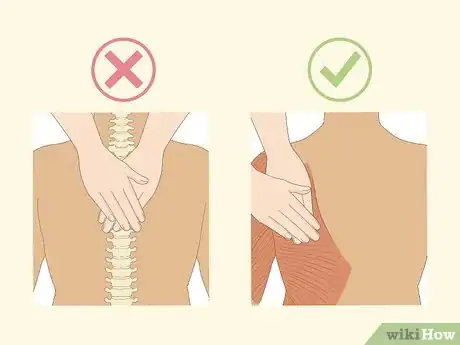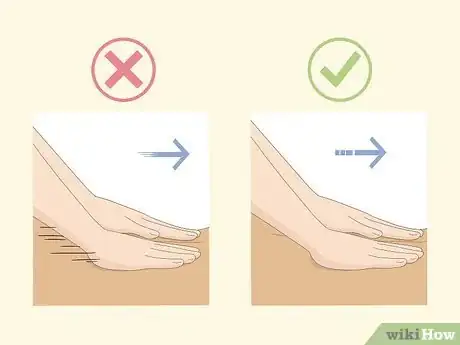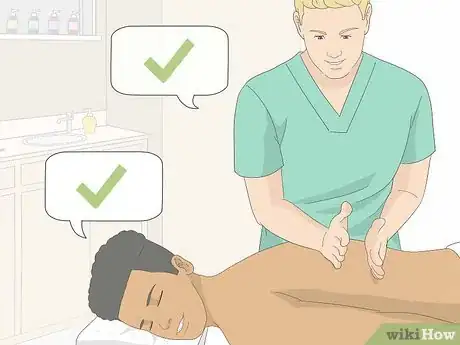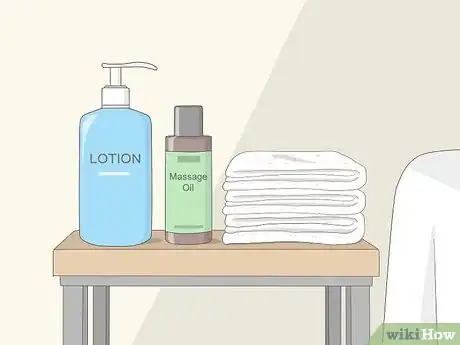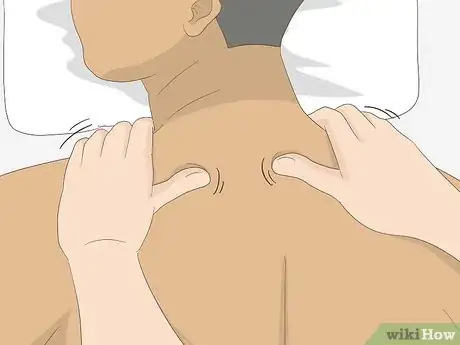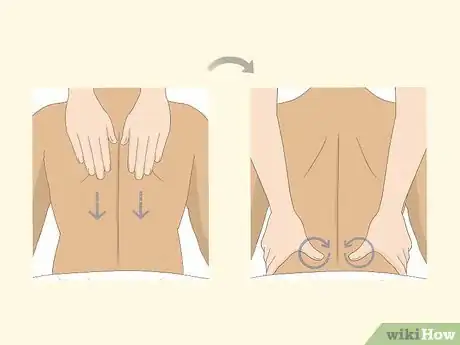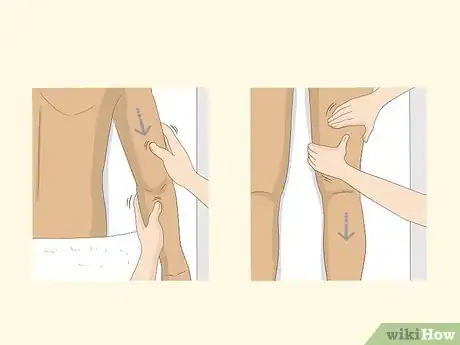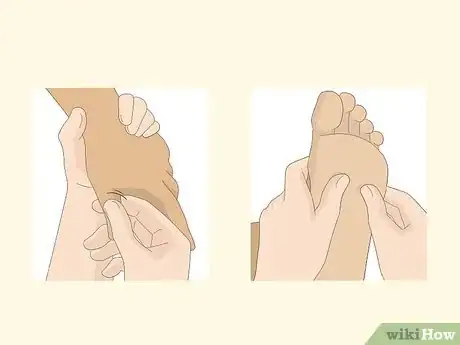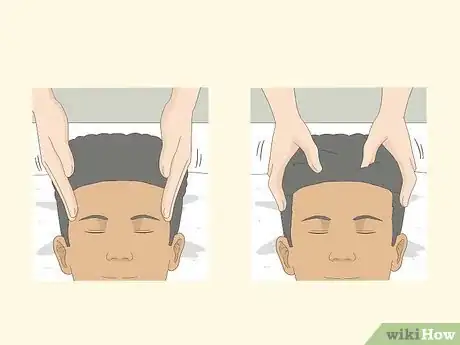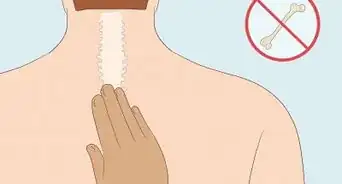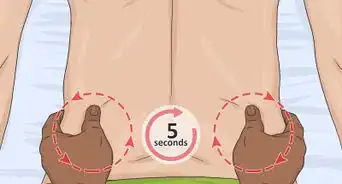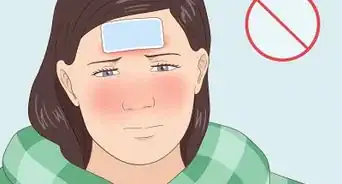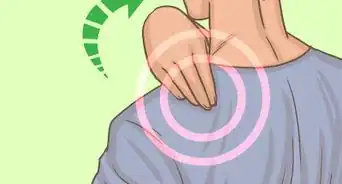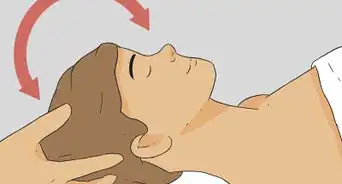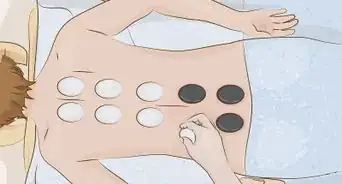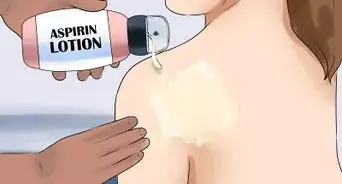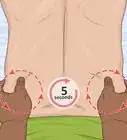This article was co-authored by Marty Morales. Marty Morales is a Professional Massage Therapist and the Founder and Owner of the Morales Method, a manual therapy and body conditioning business based in the San Francisco Bay Area and in Los Angeles, California. Marty has over 16 years of massage therapist experience and over 13 years of experience educating others on the best practices for massage therapy. Marty has over 10,000 hours of private practice logged and is a Certified Advanced Rolfer and Rolf Movement Practitioner, CMT. He has an MBA in Finance from Loyola Marymount University, Los Angeles.
There are 10 references cited in this article, which can be found at the bottom of the page.
wikiHow marks an article as reader-approved once it receives enough positive feedback. In this case, 90% of readers who voted found the article helpful, earning it our reader-approved status.
This article has been viewed 313,430 times.
Massages relax muscles, stimulate circulation, and decrease emotional stress. Giving someone a quick shoulder rub is nice, but if you want to create a memorable and healing experience for your loved one, it's worth taking the time to set up a soothing environment and use the proper technique. Read on to find out everything you need to know to give an excellent massage.
Steps
Using the Right Technique
-
1Learn the strokes. The most common massage type is a Swedish massage.[1] It uses four different types of strokes to relax and heal the muscles.[2] A full-body massage employs all four techniques:
- Effleurage is a smooth stroke that relaxes soft muscle tissue. Your hands should glide easily over the surface of the body.
- Petrissage involves squeezing and rolling the muscle between your hands, which is useful for loosening muscle tension.
- Friction is the use of deep movements administered with steady pressure in order to cause tissues to rub against one another and stimulate circulation.
- Tapotement is a staccato tap done with the sides or heels of the hands.
-
2Focus on the muscles, not the bones.[3] When you're giving a massage, the key is to use your hands to work the muscles in the neck, shoulders, back, arms, legs and feet. Use a gentle touch to locate the soft, fleshy muscles, then knead them with your hands. Never exert pressure on a person's bones, especially the spine and tailbone. If you're in doubt about whether a spot is composed of muscle or bone, use a gentle, light touch to stroke it, then move on to another section.Advertisement
-
3Apply pressure, but not too much.[4] Knead the muscles with your fingers, palms and the heels of your hands. Exert a steady, firm pressure to stimulate circulation and loosen the muscles. Don't use the weight of your body to push down on a person's muscles, though; you could end up causing pain or even an injury if you press too hard.
- When you apply the right amount of pressure, you should be able to feel the muscle move and relax under the skin. The person you're massaging might utter sounds of relaxation, but he or she should not cry out in pain. If the person complains, ease up.
- Sometimes it's difficult to apply even pressure using your hands, especially if you get tired after awhile. Try using a tennis ball instead of your hands. Place the ball against the muscle you're massaging and use your hand to gently roll it against the body.
-
4Massage slowly.[5] The person you're massaging should not get the impression that you are in a hurry. Working too quickly makes the massage session less relaxing, and also less effective; you can't thoroughly massage the muscles if you make quick motions over the surface of the body instead of taking the time to penetrate deeper.
- Use steady, even strokes as you massage, rather than quick, jerky motions.
- Divide the total massage time among the body parts you are massaging. For example, if you planned for the massage to take an hour, spend ten minutes on the neck, twenty on the back and shoulders, ten on the arms, ten on the legs, and ten on the feet.
-
5Communicate with the person you're massaging. Ask them which muscles feel tense or tight. Tell them to let you know if the massage feels painful or uncomfortable in any way, and be sure to respect their wishes during this intimate process.[6]
Creating a Soothing Setting
-
1Choose a peaceful room.[7] During a massage, outside distractions should be kept to a minimum. Traffic noises, outside music, and the sound of people's voices can disrupt the relaxing mood that makes massages so emotionally beneficial. The bedroom is the most obvious choice, but if there's another room in your house that's more removed from the main action in your home, consider using it as the massage room.
- The massage room should be clean, without excessive clutter or messy areas that could make the person you're massaging feel anxious or stressed out. If you're using the bedroom and there's a pile of laundry in the corner, clean it up before you start the massage.
- Choose a room with plenty of privacy. Find a place where you aren't likely to get interrupted by children, roommates or pets wandering in. If the door to the room has a lock, you may want to consider using it.
- Make sure the temperature in the room is comfortable, so that the person you're massaging doesn't get too cold or warm.
-
2Prepare the massage area.[8] Professional massages take place on massage tables, but any flat, comfortable surface is appropriate for a home massage. You can use a bed, the floor, or even your dining room table, as long as you're sure it's sturdy enough to hold the weight of a person without collapsing.
- Line the massage area with clean, soft sheets. [9] If the person you're massaging tends to get cold, you could also line the area with a warm blanket or two. The surface you're using should be flat and smooth, so the person being massaged feels as comfortable as possible while also being supported.
- Provide a small pillow for the person to rest their head upon during the massage.
-
3Set up a table with massage supplies. To give the most basic massage, all you really need are your hands. However, certain equipment can make the experience more effective and pleasurable. Prepare for the massage but setting up a small side table with these items:
-
Massage oil or lotion. Applying some oil or lotion before you begin rubbing the person's body will help your hands slide smoothly across their skin. This prevents chafing and irritating or painful friction.
- Special massage oils are sold in health and beauty stores, but you could also use almond oil, jojoba oil or another cosmetic-grade oil from the health food store.
- Make your own massage oil by mixing coconut oil with a few drops of essential oil, such as lavender, which promotes relaxation, or lemongrass, which is energizing.
- A few clean towels. If you decide to use oil or lotion, it's good to have a few towels in case you need to wipe up spills or excess liquid as you go. You might also use the towels to cover parts of the person's body that aren't being massaged so they stay warm while you work on other parts of the body.
-
Massage oil or lotion. Applying some oil or lotion before you begin rubbing the person's body will help your hands slide smoothly across their skin. This prevents chafing and irritating or painful friction.
-
4Consider lighting and music. The lighting in the massage room should be dim, but not dark, to promote a soothing but not sleepy atmosphere. Turn off the overhead lights in the room, and if the sun is bright, close the shades as well. Consider lighting a few candles around the room. If you want to use music to help the person you're massaging feel relaxed, choose peaceful instrumental music without a steady beat.
-
5Help the person you're massaging get comfortable. Invite the person into the room and show them the bed or spot on the floor you've set up for the massage. It's up to you and the person you're massaging to determine what the person wears during the massage. If clothing is worn, it should be thin and lightweight, so that the massage can be effectively administered through the fabric.
- Let the person know that he or she should lie face down on the bed or massage area.
- You may want to leave the room for a few minutes so they have time to get comfortable before the massage begins.
Performing a Full-Body Massage
-
1Start with the neck and shoulders.[10] People often hold a lot of tension in this area of their body, and when you don't have time to do a full massage, focusing on the neck and shoulders can provide instant relaxation. To massage the neck and shoulders, use the following technique:
- Use your fingers to grasp the side of the neck and gently press on the muscles and tendons. Knead with your thumb and forefingers. You can massage the head at the same time with your free hand.
- Rest your fingers over the shoulders and place your thumbs on the muscles located on either side of the neck. Squeeze the shoulders and press in with your thumbs. The motion should be slow and steady.
- You can also use your forearms to massage the shoulders. Rest your forearms on either shoulder and gently rock back and forth to loosen the shoulder muscles.[11]
-
2Rub the back. Work down from the shoulders on either side of the back, rubbing the muscles as you go. When you get to the lower back area, knead the tight muscles there with your hands and thumbs. People who stand or sit for hours every day often develop pain in this area, so you might want to spend extra time loosening the muscles.
- Remember not to exert pressure on the spine and other back bones. Focus on the muscles to either side of the spine.
- Go deeper by kneeling beside the person and placing the heel of your hand on the lower back muscle on the opposite side, with your fingers pointing away from the body. Place your other hand on top of your first hand and lean into the muscle. Knead the muscle this way for a few minutes, then switch to the other side.
-
3Work on the arms and legs. Use both hands to form a circle around the upper arm. Knead the arm muscles with your palms and fingers, working your way down to the wrists. Repeat with the opposite arm, then work on the legs, starting from the thighs and kneading the muscles until you reach the ankles.
-
4Massage the hands and feet. Have the person you're massaging turn over so that his or her face and torso are now facing up. Massage each hand between your thumb and forefinger, taking care to work the muscles in the palms, thumbs, and each individual finger. Do the same with the feet, making sure not to press too hard on the bones.
- Use gentle, even strokes on the feet. Try not to tickle the person, since that could break their state of relaxation.
- Bend the hands and feet back and forth to stretch the muscles as you massage them.
-
5End with the face and head. Kneel behind the person you're massaging and use your fingers to rub his or her temples in circles. Gently rub the forehead and sinus area. Place your fingers on the person's scalp and massage it using the same motion you'd use to shampoo your hair.
Expert Q&A
-
QuestionWhat questions should a massage therapist ask a client?
 Justyna KaretaJustyna Kareta is a Certified Master Massage Therapist and Owner of Lush Massage, a massage studio based in San Francisco, California. Justyna has over nine years of experience as a therapist and specializes in Lomi Lomi Hawaiian Massage and CranioSacral Therapy to soothe the nervous system and facilitate deep healing. She received her massage therapy training from the Southwest Institute of Healing Arts, is certified by California Massage Therapy Council, and is a member of the Associated Bodywork & Massage Professionals.
Justyna KaretaJustyna Kareta is a Certified Master Massage Therapist and Owner of Lush Massage, a massage studio based in San Francisco, California. Justyna has over nine years of experience as a therapist and specializes in Lomi Lomi Hawaiian Massage and CranioSacral Therapy to soothe the nervous system and facilitate deep healing. She received her massage therapy training from the Southwest Institute of Healing Arts, is certified by California Massage Therapy Council, and is a member of the Associated Bodywork & Massage Professionals.
Certified Master Massage Therapist When you're just starting out giving massages, communication is critical. You don't know what your client is experiencing, so you need to keep checking in with them. Also, pay attention to whether you're going too deep, your client is tensing up, or they're making painful noises. You can avoid a stressful massage by talking this through with your client.
When you're just starting out giving massages, communication is critical. You don't know what your client is experiencing, so you need to keep checking in with them. Also, pay attention to whether you're going too deep, your client is tensing up, or they're making painful noises. You can avoid a stressful massage by talking this through with your client.
Warnings
- Make sure there are no contra-indications (reasons not to massage) like a skin infection.⧼thumbs_response⧽
References
- ↑ Marty Morales. Professional Massage Therapist. Expert Interview. 20 December 2019.
- ↑ http://www.webmd.com/balance/massage-therapy-styles-and-health-benefits
- ↑ https://www.massagetut.com/how-to-massage-shoulders/
- ↑ https://www.painscience.com/articles/pressure-question.php
- ↑ https://www.scienceofmassage.com/2009/07/speed-of-massage-strokes/
- ↑ Marty Morales. Professional Massage Therapist. Expert Interview. 20 December 2019.
- ↑ https://broadviewuniversity.edu/2017/11/08/decorate-massage-room-budget/
- ↑ https://www.youtube.com/watch?v=Ccd4TT18GCg
- ↑ https://www.youtube.com/watch?v=Ccd4TT18GCg
- ↑ https://www.massageaholic.com/how-to-give-a-full-body-massage-step-by-step-instructions/
- ↑ Marty Morales. Professional Massage Therapist. Expert Interview. 20 December 2019.
- http://www.refinery29.com/massage/slideshow#slide-3
- http://www.sheknows.com/love-and-sex/articles/809041/how-to-give-your-partner-a-great-massage
About This Article
To give a soothing massage, use your fingers, palms, and the heels of your hands to knead the muscles with steady pressure and slow, even strokes. First, gently press on the muscles and tendons on the sides of the neck, kneading with your thumbs and forefingers. Next, work down from the shoulders on either side of the back, rubbing the muscles as you go, then make your way down the legs and arms. Remember to use a gentle touch and avoid applying pressure to the person's bones! For tips on creating a soothing setting, read on!


